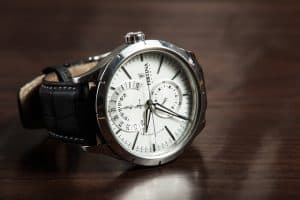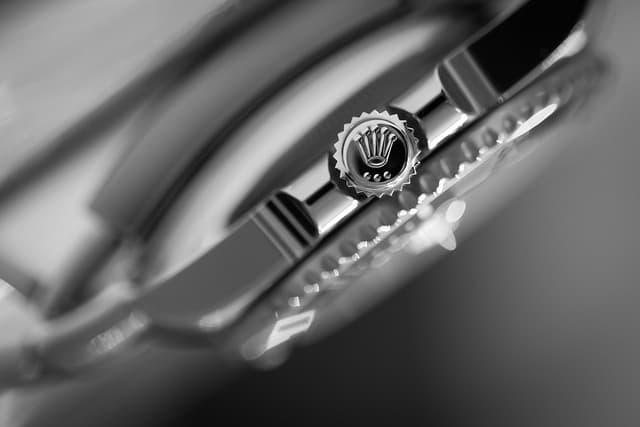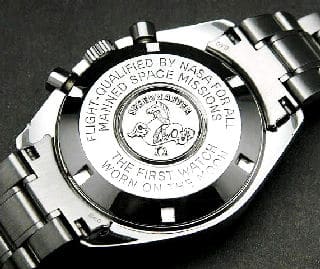If you don’t know much about watches, you might be wondering what a watch crown is?
I certainly don’t blame you because there are so many parts to a watch that someone new to the game might find it all a little confusing.
What Is A Watch Crown?

Watch crowns are those small little knobs on the side of your watch, usually made of metal. The majority of them are simply round with machined lines running along the width, to help give you grip.
Ok, so a crown is a little piece of metal, but what is it for?
Depending on the features of your watch, a watch crown can help do the following:
- wind your watch
- set the time
- adjust other settings like day/date, moon phases
- start/stop the stopwatch timer
Fundamentally, watch crowns are designed to give access to the inner workings of the watch movement to allow for this variety of functions.
Types Of Watch Crowns
Because the crown is such a prominent element on a watch, designers have taken to leaving their mark on them. Both in terms of design as well as literally leaving their mark!
Below you can see a Rolex crown with their distinctive logo embossed on the crown quite clearly.

Technically, there are also quite a few types of crowns created that help with both the function of the watch and other areas like waterproofing of things like dive watches. These include:
- Screw-down crowns
- Waterproof crowns
- Dustproof crowns
- Dress crowns
Some crown manufacturers have also been known to embed jewels on the end to add just that little bit more spice and luxury. Sure, you might not wear such a crown on your dive watch, but for a top-end luxury watch, who doesn’t want that extra ruby?
Watch Crown Protection
As you can clearly see, the crown is quite a vulnerable part of a watch. So, it is no surprise that many watch designers have chosen to address this problem.
There are a few popular ways to help protect the crown from damage, such as adding additional metal around the crown. You can see this with the Omega watch below where the crown is quite nicely tucked into a recess created by the metal flanges around it.

Other watchmakers such as Seiko have angled their crown at the 4 o’clock position to help protect both the crown itself, as well as the watch wearer. This is quite a smart idea as it is not something you need to get to very often, but it can get in the way, get damaged, or just rub your wrist during daily wear!
So, as you can see, there is a lot more to this tiny little knob known as the crown than perhaps you would have imagined.
Next time you are checking out a future watch purchase, have a closer look at the side of the watch and see how they have crafted this masterpiece called “the crown”.
